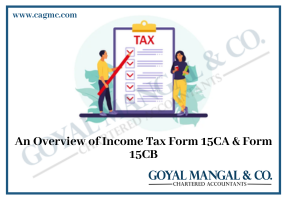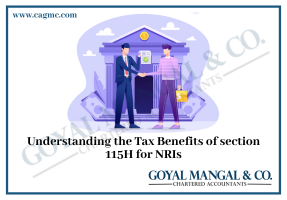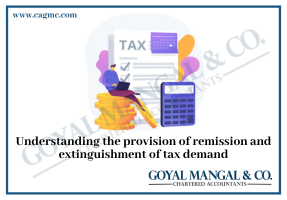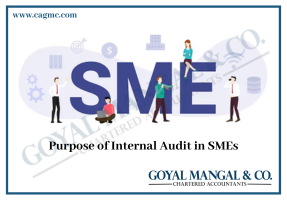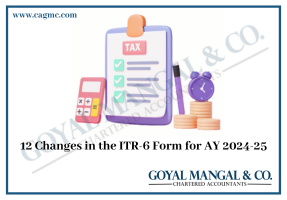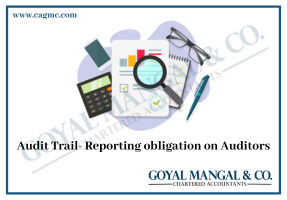
In the dynamic landscape of employee benefits and tax planning, Corporate National Pension Scheme (NPS) has emerged as a strategic tool for employers to not only offer valuable retirement provisions to their workforce but also optimize tax implications for both parties. This article delves into the concept of Corporate NPS and how it can be a win-win solution for employers and employees seeking financial security and tax efficiency.
Meaning of Corporate NPS
Corporate NPS, or Corporate National Pension Scheme, is a specialized variant of the National Pension Scheme (NPS) in India. It allows employers to set up a retirement savings scheme for their employees within the NPS framework.
This structured pension program enables employees to accumulate a retirement corpus through contributions from both the employer and the employee. The contributions are invested based on the employee’s chosen investment strategy, offering flexibility and potential growth. Corporate NPS offers tax benefits to both employers and employees, making it a tax-efficient and beneficial retirement savings option for companies and their workforce.
Features of Corporate NPS
Corporate National Pension Scheme (NPS) offers a structured retirement savings solution tailored for employers and employees alike. Here are the key features that make Corporate NPS a compelling choice for organizations:
- Dual Contributions: Both employers and employees contribute to the Corporate NPS account, fostering a collaborative approach to retirement planning.
- Flexibility in Investment: Employees have the freedom to choose from various investment options, ranging from equity to fixed income, based on their risk appetite and financial goals.
- Professional Fund Management: NPS funds are managed by Pension Fund Managers (PFMs) registered with the Pension Fund Regulatory and Development Authority (PFRDA), ensuring expert management of investments.
- Portable and Uniform: The NPS account remains with the employee regardless of job changes. Uniform guidelines ensure consistent management across various sectors.
- Voluntary Participation: Employers can structure participation as voluntary or mandatory, based on company policies.
- Tiered Structure: NPS has two tiers: Tier-I, which is a mandatory pension account with withdrawal restrictions, and Tier-II, which allows withdrawals without restrictions.
- Tax Benefits: Both employer and employee contributions to Corporate NPS are eligible for tax deductions, providing a significant incentive for participation.
Benefits of Corporate NPS
Corporate NPS benefits are:
- Employee Financial Security: Corporate NPS encourages disciplined retirement planning; ensuring employees have a robust financial cushion after their active years.
- Tax Efficiency for Employers: Contributions made by employers towards Corporate NPS are treated as business expenses, leading to reduced taxable income.
- Attraction and Retention: Offering Corporate NPS enhances the benefits package, aiding in attracting and retaining talented employees who prioritize long-term financial security.
- Structured Retirement Savings: Corporate NPS establishes a structured mechanism for employees to save for retirement, promoting a sense of responsibility towards their financial well-being.
- Employee Empowerment: The investment choices provided by Corporate NPS empower employees to align their investments with their risk tolerance and life goals.
- Cost Management: Including Corporate NPS as part of the benefits package enables better financial planning, making it easier to manage costs related to employee benefits.
- Tax Efficiency for Employees: Employees benefit from tax deductions on their contributions under Section 80C and an additional deduction under Section 80CCD(1B)
- Linked to the Market Returns: You can divide your corpus among four different market-linked investment kinds using your corporate NPS contribution. By specifying the percentage of asset allocation, you can decide whether to invest in equities, corporate debt, government securities, or alternative assets. Calculate your returns, using a Corporate NPS calculator. In the case of NPS, there is no defined or guaranteed return.
- Portability: The Corporate NPS provides total portability. Your Corporate NPS account will remain the same if you switch employment or relocate to a different section of the country or state.
In conclusion, Corporate NPS offers a symbiotic relationship where employers can enhance employee benefits while optimizing tax planning. Employees, on the other hand, gain access to a well-structured retirement savings avenue with tax benefits.
Eligibility Criteria for Corporate NPS
Corporate National Pension Scheme (NPS) provides a structured retirement savings platform tailored for employees in Indian organizations. The eligibility criteria for participating in Corporate NPS are as follows:
- Employment Status: To be eligible for Corporate NPS, an individual must be an employee of an organization that offers this pension scheme as part of its employee benefits package.
- Employment Type: Corporate NPS is designed to encompass several types of employment, including full-time, part-time, contractual, and temporary positions. Eligibility can be extended to different employment arrangements based on the organization’s policies.
- Participation Agreement: Eligible employees need to agree to the terms and conditions set by their employer regarding their participation in Corporate NPS. This agreement might cover aspects such as contribution amount, frequency, and other relevant details.
- Age: There is no specific age restriction for participating in Corporate NPS. Employees of different age groups can enrol, although younger employees may particularly benefit from the long-term investment nature of NPS.
- Voluntary or Mandatory Participation: Depending on the organization’s approach, participation in Corporate NPS might be voluntary or mandatory. Some employers provide the option for employees to choose whether they want to join the scheme, while others may make it compulsory for all eligible employees.
- Citizenship and Residency: Corporate NPS is primarily available for Indian citizens and residents. Non-resident Indians (NRIs) might have specific rules governing their eligibility based on their residency status.
- Exclusions: While Corporate NPS is inclusive, certain categories of employees, such as casual labourers or those with very short-term contracts, might not meet the eligibility criteria due to administrative complexities.
Entities that can join the Corporate NPS Model
Entities eligible to register under or join the NPS Corporate Model include a wide array of organizational structures such as:
- Companies (Public and Private)
- Limited Liability Partnerships (LLPs)
- Partnerships
- Sole Proprietorships
- Cooperative Societies
- Trusts
- Registered Societies
- Autonomous Bodies
- Public Sector Undertakings (PSUs)
- Government Departments
These entities can utilize the NPS Corporate Contribution Model to provide their employees with a streamlined and tax-efficient retirement savings solution, contributing to their financial security and well-being in the long run.
Types of Accounts under NPS
Under the Corporate National Pension Scheme (NPS), several types of accounts are available, each serving specific purposes and offering distinctive features. These accounts cater to the diverse needs and preferences of employees. The primary types of accounts under Corporate NPS include:
- Tier-I Account: This is the mandatory pension account where both employer and employee contributions are directed. It comes with certain restrictions on withdrawals, encouraging long-term retirement savings.
- Tier-II Account: Unlike the Tier-I account, the Tier-II account is a voluntary savings account. It offers greater flexibility in terms of withdrawals, making it suitable for short-term financial goals.
- Individual Pension Account: This account is established for each employee participating in the Corporate NPS. It holds the contributions made by the employer and employee, which are then invested as per the chosen investment strategy.
- Central Recordkeeping Agency (CRA) Account: The CRA account is maintained by the designated CRA, which is responsible for the recordkeeping and administration of NPS accounts, ensuring accurate and efficient management of contributions and investments.
These several types of accounts within the Corporate NPS framework cater to employees’ varying financial goals and retirement planning needs, allowing for a customized approach to securing their financial future.
Tax Advantages of Corporate NPS
If you invest in Corporate NPS, you may be eligible for NPS corporate scheme tax benefits and exemptions under Sections 80C and 80CCD of the Income Tax Act of 1961. The corporate NPS tax benefits for which employees are qualified are broken down below. Tax deductions are available for contributions made by the employer on behalf of NPS subscribers under the following conditions:
- 10% of the gross pay, calculated as basic wage plus daily allowance.
- The total deductions for all such contributions are limited to 7.50 lakh rupees per year concerning the retirement payments made by the employer to Superannuation Fund, Provident Fund, and NPS
- Under Section 80CCD (1B) of the Income Tax Act of 1961, the employee may also claim a tax deduction on an additional self-contribution of up to 50,000.
Corporate NPS Investment Options
Corporate NPS offers participants a selection of investment options, allowing them to tailor their retirement savings strategy according to their risk tolerance and investment objectives. These options encompass a spectrum of asset classes, catering to varying risk profiles. Participants can choose from these main options:
- Equity (E): The Equity option allows participants to invest in a diversified portfolio of equities. The stock-holding NPS option has the potential for higher returns, but it comes with a higher level of risk due to market fluctuations.
- Corporate Bonds (C): The Corporate Bonds option focuses on investing in fixed-income instruments issued by corporates. This choice offers stable returns and lower risk compared to equity investments.
- Government Securities (G): The Government Securities option involves investing in securities issued by the government. These investments are the safest among the available options, providing stable returns with minimal risk.
- Aggressive Lifecycle Fund: This option is suited for participants with a higher risk appetite. In the early years of their career, the fund allocates a massive portion to equities, aiming for potentially higher returns. As participants approach retirement, the allocation gradually shifts towards more conservative assets to mitigate risk.
- Moderate Lifecycle Fund: Participants who seek a balanced approach between risk and stability can choose the Moderate Lifecycle Fund. It maintains a moderate allocation to equities during the working years, gradually transitioning to safer assets as retirement nears.
- Conservative Lifecycle Fund: Suited for those with a lower risk tolerance, the Conservative Lifecycle Fund prioritizes stability. It maintains a larger allocation to stable assets like corporate bonds and government securities throughout the investment horizon.
NPS Withdrawal Regulations and Rules
The National Pension Scheme (NPS) provides a structured framework for retirement savings, with specific rules and regulations governing withdrawals. Here’s a take on the withdrawal process:
- Normal Exit: Upon reaching the age of 60, NPS participants can withdraw up to 60% of their accumulated corpus as a lump sum. The remaining 40% is required to be utilized to purchase an annuity plan from a recognized insurer, ensuring a steady income stream during retirement.
- Early Exit: In case of early exit before the age of 60, participants can withdraw only 20% of their corpus as a lump sum. The remaining 80% must be used to purchase an annuity for guaranteed income post-retirement.
- Premature Withdrawal: In certain situations, like critical illnesses or higher education expenses, participants can withdraw up to 25% of their contributions after completing three years in the NPS.
- Annuity Purchase: The annuity purchased with the mandatory 40% or 80% corpus ensures a regular income post-retirement. The annuity options include various choices such as life annuity, joint-life annuity, and increasing annuity, providing flexibility based on individual needs.
Final Words
Corporate NPS exemplifies the synergy between responsible financial planning and progressive corporate culture. It is an avenue where employers invest not just in their employees’ current well-being but also in their post-retirement security. The tax efficiency, coupled with the potential for substantial retirement savings, renders Corporate NPS a powerful tool for employers to showcase their commitment to employee welfare and for employees to embark on a journey towards a secure financial future.

